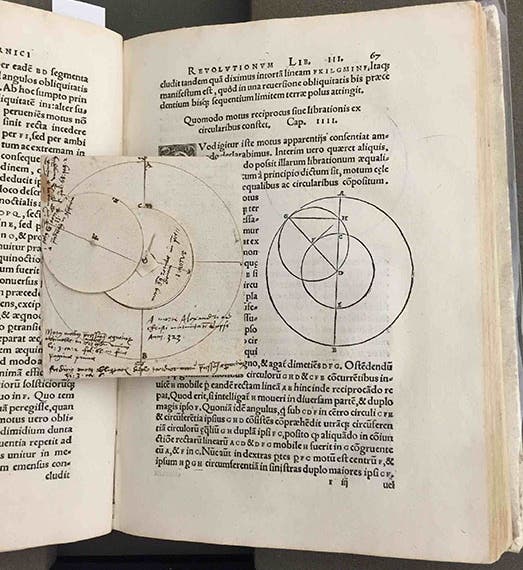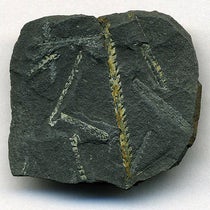Scientist of the Day - Nasir al-Din al-Tusi
Nasīr al-Dīn al-Tūsī, one of the greatest polymaths of medieval Islamic philosophy and science, died in Baghdad during the night of June 25th/26th, 1274 (Gregorian calendar, or AH 672 in the Islamic calendar). His prolific writings across numerous areas of law, theology, ethics, natural philosophy, and especially the mathematical sciences earned him honorific titles of “teacher of mankind” and “the third teacher” (after Aristotle and al-Farabi) among subsequent generations of scholars. His life story reveals him to be also an example of savvy political survival and administrative leadership amidst turbulent times, on one occasion not only negotiating the surrender of his besieged castle to Hülegü Khan's Mongol army, but then acquiring Hülegü as a patron for building a new astronomical observatory at Maragha.
Tusi is best known in the history of European science for a mathematical device known as the “Tusi couple,” in which one circle rotates inside another in order to represent rectilinear motion. This device was useful for trying to eliminate certain irregular forms of motion that medieval astronomers objected to in the ancient models of Ptolemy of Alexandria, and a modified form of Tusi’s couple somehow found its way into the planetary models of Nicholas Copernicus. The Linda Hall Library’s copy of the first edition of Copernicus’s book even includes a paper volvelle model of the Tusi couple that an early user created as a movable representation of the printed diagram in Copernicus’s book (first image). This Tusi couple featured in an earlier post for Scientist of the Day, but today we’re going to focus on an unusual Arabic edition of Euclid attributed to Tusi that was printed in 1594 by the Medici Press in Rome.
The library is fortunate to have an extensive collection of rare Euclid volumes including the first printed Latin edition from 1482, issued by pioneering German printer Erhard Ratdolt, and the first English translation in 1570, featuring a preface by John Dee and magnificent 3D pop-up illustrations. The Medici Press edition represents another first, as the first Arabic edition of Euclid to be printed with movable type and indeed the only Arabic version of Euclid to be printed before the 19th century. It was printed from a manuscript that still survives, complete with annotations from the printing process, and the type itself is a remarkably elegant reproduction of Arabic cursive script, considering its relative novelty in Europe during that time. We show here a detail of the text and diagram for the Pythagorean theorem (second image); for the entire page, click here.
Euclid’s work was among the earliest Greek scientific texts translated into Arabic, with two 9th-century versions that were revised and commented on repeatedly by later writers. Tusi’s text on Euclid, however, falls into a somewhat different category. What Tusi produced was a “tahrīr” – perhaps best translated in English as “redaction” – which aimed not at a literal rendering of Euclid’s original work but rather a logical summary of the text combined with commentary and alternate demonstrations for difficult passages.
The tahrir format was very common for the scholarship and pedagogy of Tusi’s time, and at least two other Euclid versions were produced, neither of which survive in more than a handful of copies. Tusi’s edition of Euclid, on the other hand, was immensely popular, judging from the number of times it was copied and recopied and later translated into Persian and Sanskrit. This was no doubt aided by the number of students and other scholars he attracted to his famous Maragha observatory, as well as the fact that his Euclid text was part of an integrated series of pedagogical texts he produced on mathematical and astronomical works ranging from the introductory level to an advanced commentary on Ptolemy’s Almagest. A complete survey of the Euclid manuscripts has never been attempted, but Tusi’s Almagest commentary alone survives in more than a hundred manuscript copies.
So much for the nature of Tusi’s work on Euclid, there remains the question of why an Arabic edition of Euclid was printed in 16th-century Rome. While there was a limited demand for Arabic works in Europe among scholars looking to improve their knowledge of the Islamic world or classical scholarship, the Rome Euclid edition was actually aimed primarily at a rather different audience. With funding from Ferdinando de’ Medici – then a cardinal, and later Grand Duke of Tuscany and predecessor to Galileo’s patron Cosimo – the press issued a series of Arabic works on Christian doctrine and “permissible human sciences with no religious content” for the purpose of spreading the art of printing in Islamic lands and promoting conversions to Christianity. Many of the manuscripts selected for printing derived from the collection of a refugee Syriac Christian patriarch from Antioch who donated his library for this purpose but then died as printing was just getting started.
One indication of the Euclid book’s target market can be seen on its final page, which is in Turkish rather than Arabic, and reproduces a decree by the Ottoman sultan ordering officials not to confiscate books and other goods carried by European merchants. Despite repeated marketing attempts and gifts of books to travelers heading into Ottoman lands, however, nearly two-thirds of the initial print run of 3000 copies of the Arabic Euclid edition remained still unsold in the late 17th century. The Linda Hall Library’s copy exists in its original printed condition of unbound and uncut pages, providing both a glimpse of book history concerning how 16th-century texts were sold to purchasers, as well as a suggestion that this copy may have been one of the ones that was eventually bartered or given away to a not very interested reader.
Despite their paucity of sales farther to the east, volumes from the Medici Press were not without their influence among European scholars, a few of whom acquired and annotated volumes, sometimes praising the quality of the printing while criticizing the standards of text editing. The Jesuit mathematician Giovanni Saccheri was one of the most famous users of the Arabic Euclid edition, and his published criticisms of its attempt to prove Euclid’s parallel postulate became part of his foundational work in the later development of non-Euclidean geometry.
There is one final twist to this story, however. The text that was printed in Rome with Tusi’s name attached to it was not actually written by Tusi. We know this because numerous genuine manuscript copies of Tusi’s work on Euclid survive in libraries around the world, and they are largely consistent with each other but substantially different in length, terminology, and content from the text printed in Rome. The Rome edition, despite having Tusi’s name on the title page, derives from a much less popular redaction of Euclid that now survives in only a handful of manuscript copies, one of which notes that the text of the work was originally completed in 1298, a quarter century after Tusi’s death. We do not know the identity of this text’s actual author – there has been speculation that it may have been one of the next generation of scholars from the Maragha observatory, or possibly even Tusi’s son – but whoever it was, Tusi’s greater fame seems to have overwritten its original authorship.
Today’s featured volume is thus a miniature encapsulation of many of the sometimes fascinating, occasionally frustrating threads that weave through what we know and don’t know about early scholars and their texts. And in the meantime, Tusi’s original commentary on Euclid still awaits a modern printed edition.
Karl Galle (karlgalle@aucegypt.edu) was a visiting fellow at the Linda Hall Library in 2016 and is currently working on a biography of Nicholas Copernicus.







